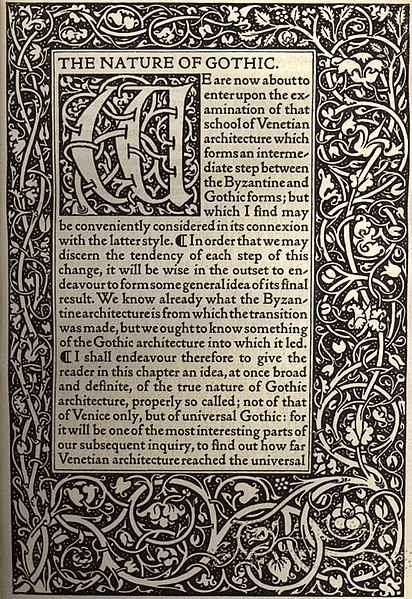The Art Workers' Guild is an organisation established in 1884 by a group of British painters, sculptors, architects, and designers associated with the ideas of William Morris and the Arts and Crafts movement. The guild promoted the 'unity of all the arts', denying the distinction between fine and applied art. It opposed the professionalisation of architecture – which was promoted by the Royal Institute of British Architects at this time – in the belief that this would inhibit design. In his 1998 book, Introduction to Victorian Style, University of Brighton's David Crowley stated the guild was "the conscientious core of the Arts and Crafts Movement".
Art Workers' Guild
The exterior of the Art Workers' Guild
The Arts and Crafts movement was an international trend in the decorative and fine arts that developed earliest and most fully in the British Isles and subsequently spread across the British Empire and to the rest of Europe and America.
William Morris' design for Trellis wallpaper, 1862
The Nature of Gothic by John Ruskin, printed by William Morris at the Kelmscott Press in 1892 in his Golden Type inspired by the 15th-century printer Nicolas Jenson. This chapter from The Stones of Venice was a sort of manifesto for the Arts and Crafts movement.
Pugin's house "The Grange" in Ramsgate, from 1843. Its simplified Gothic style, adapted to domestic building, helped shape the architecture of the Arts and Crafts movement.
William Morris, a textile designer who was a key influence on the Arts and Crafts movement






